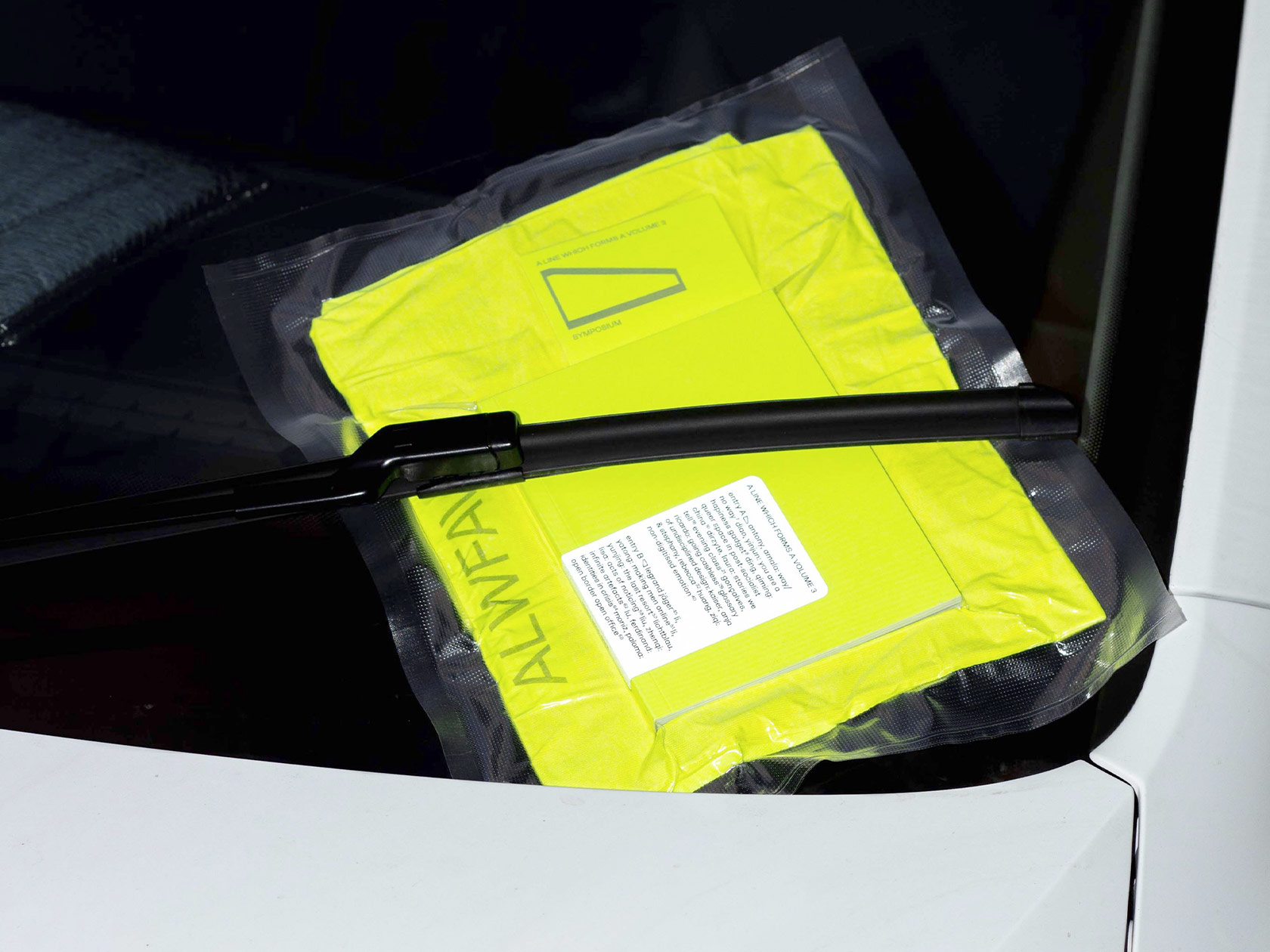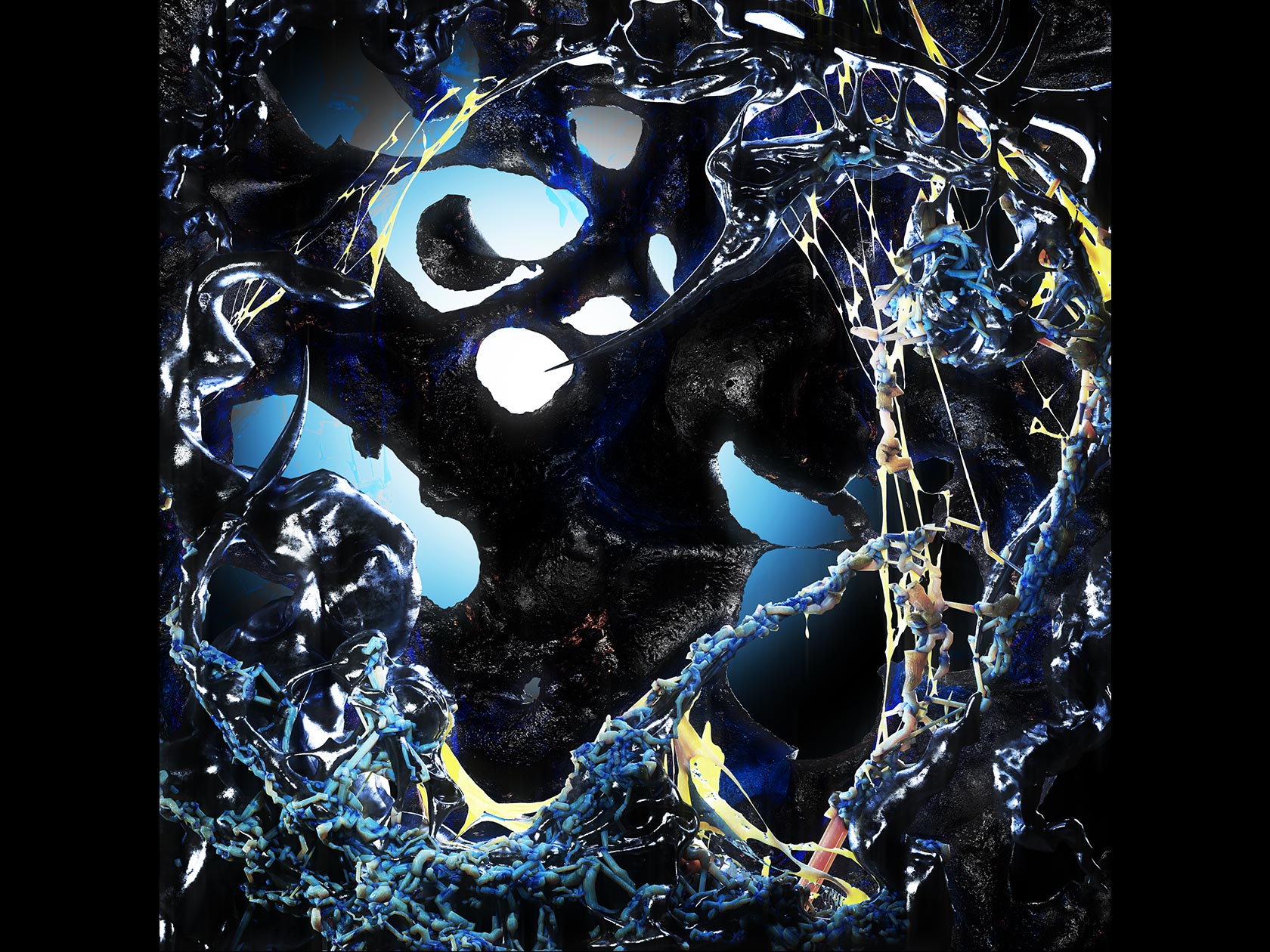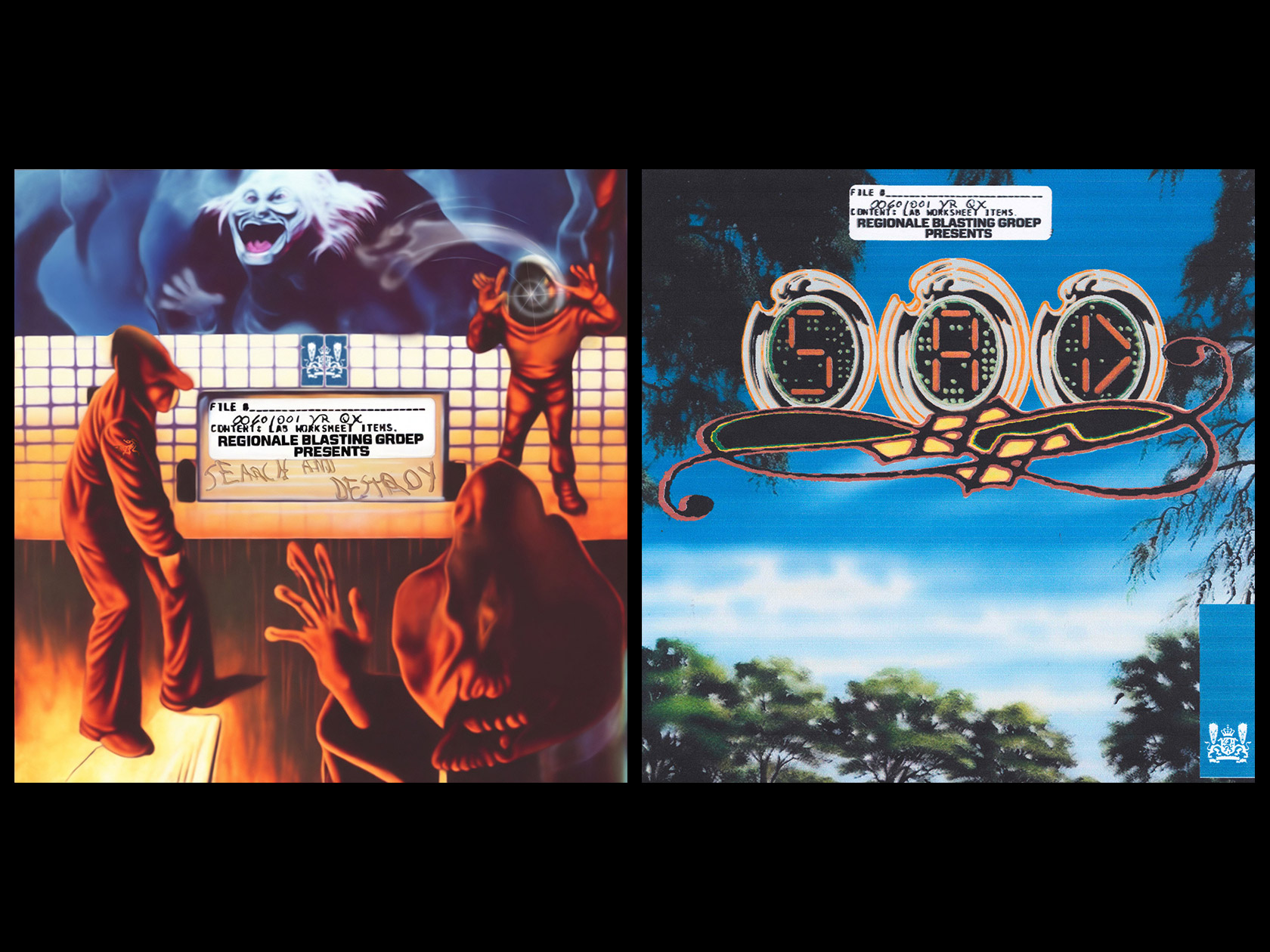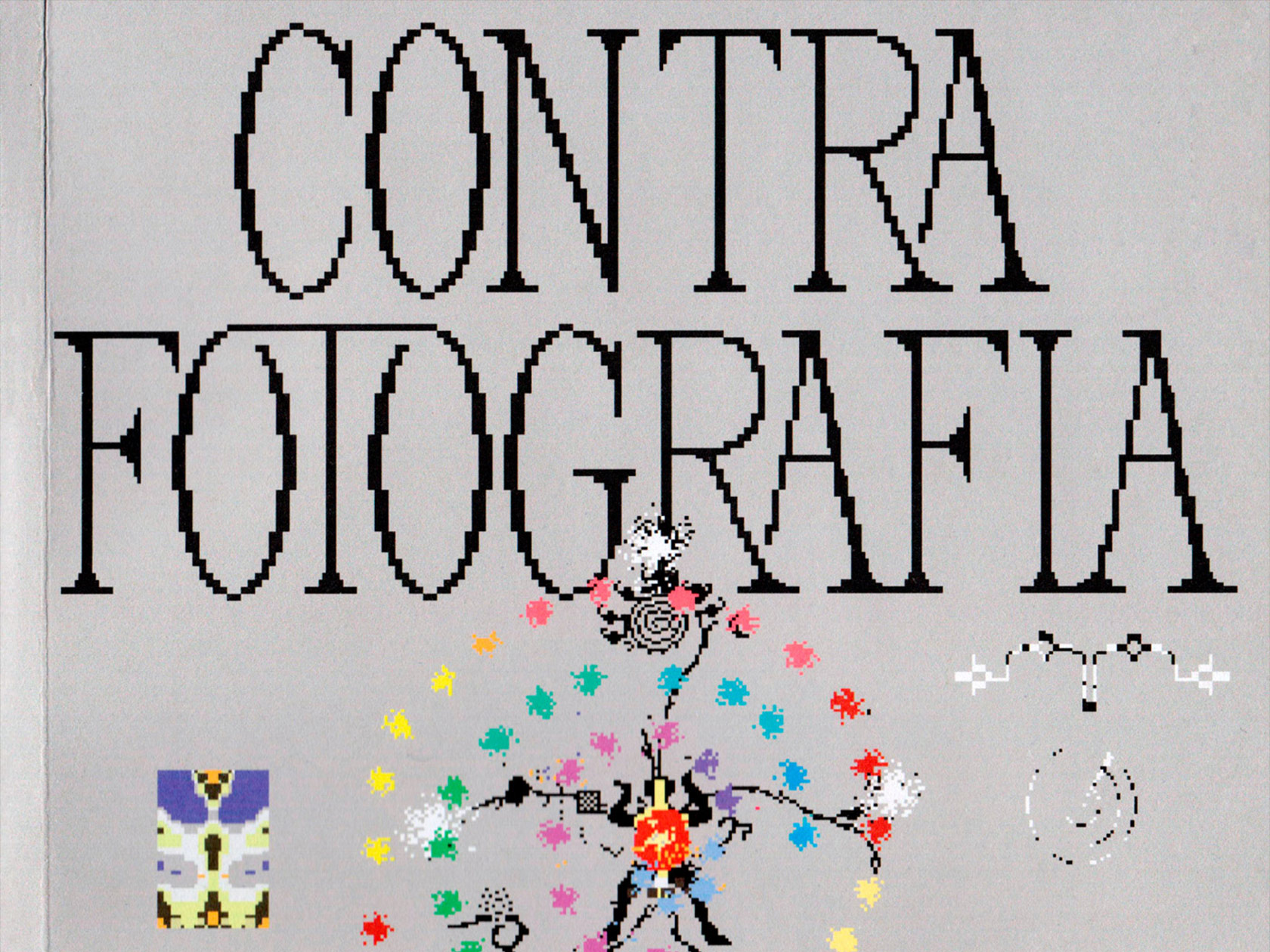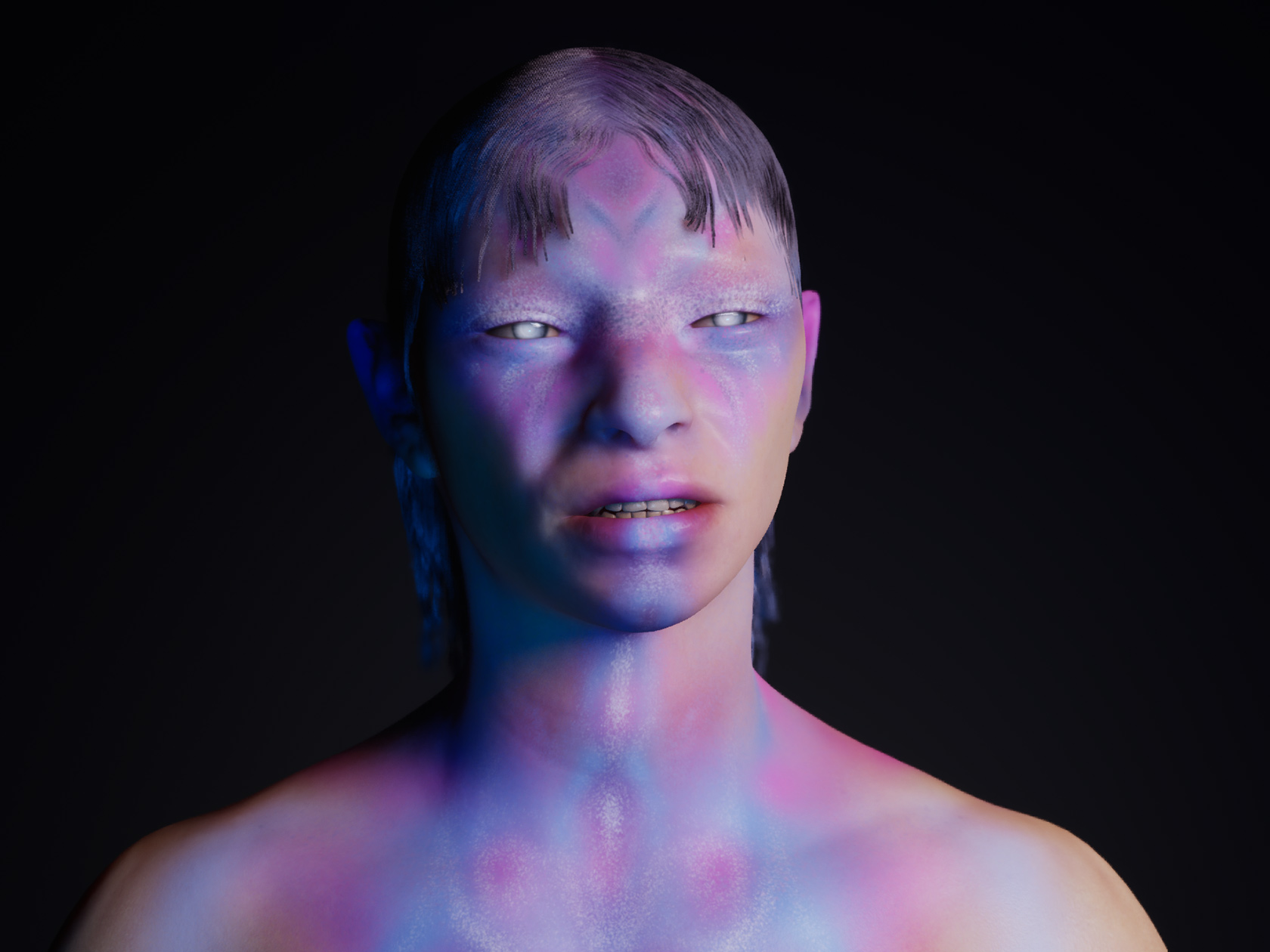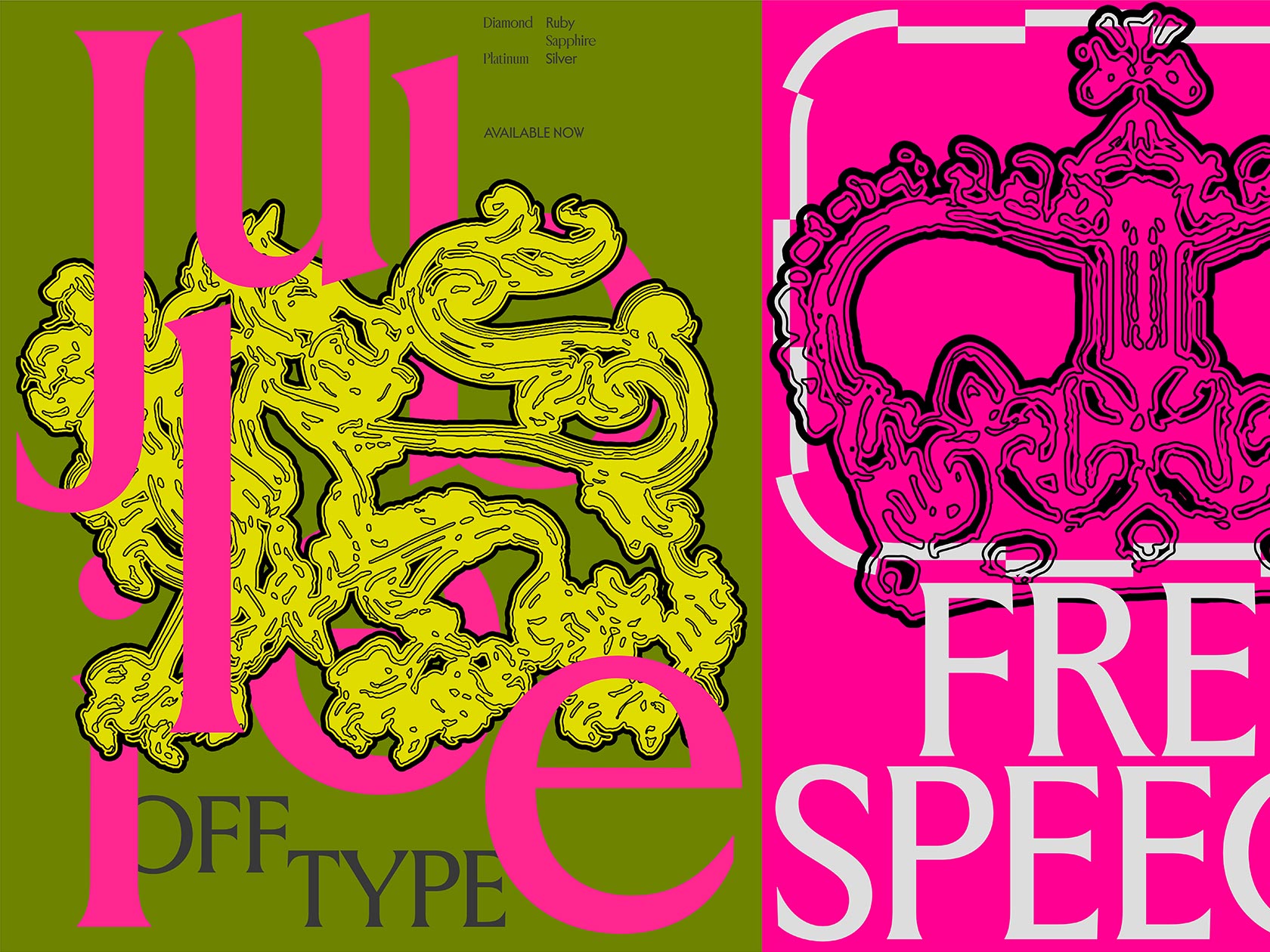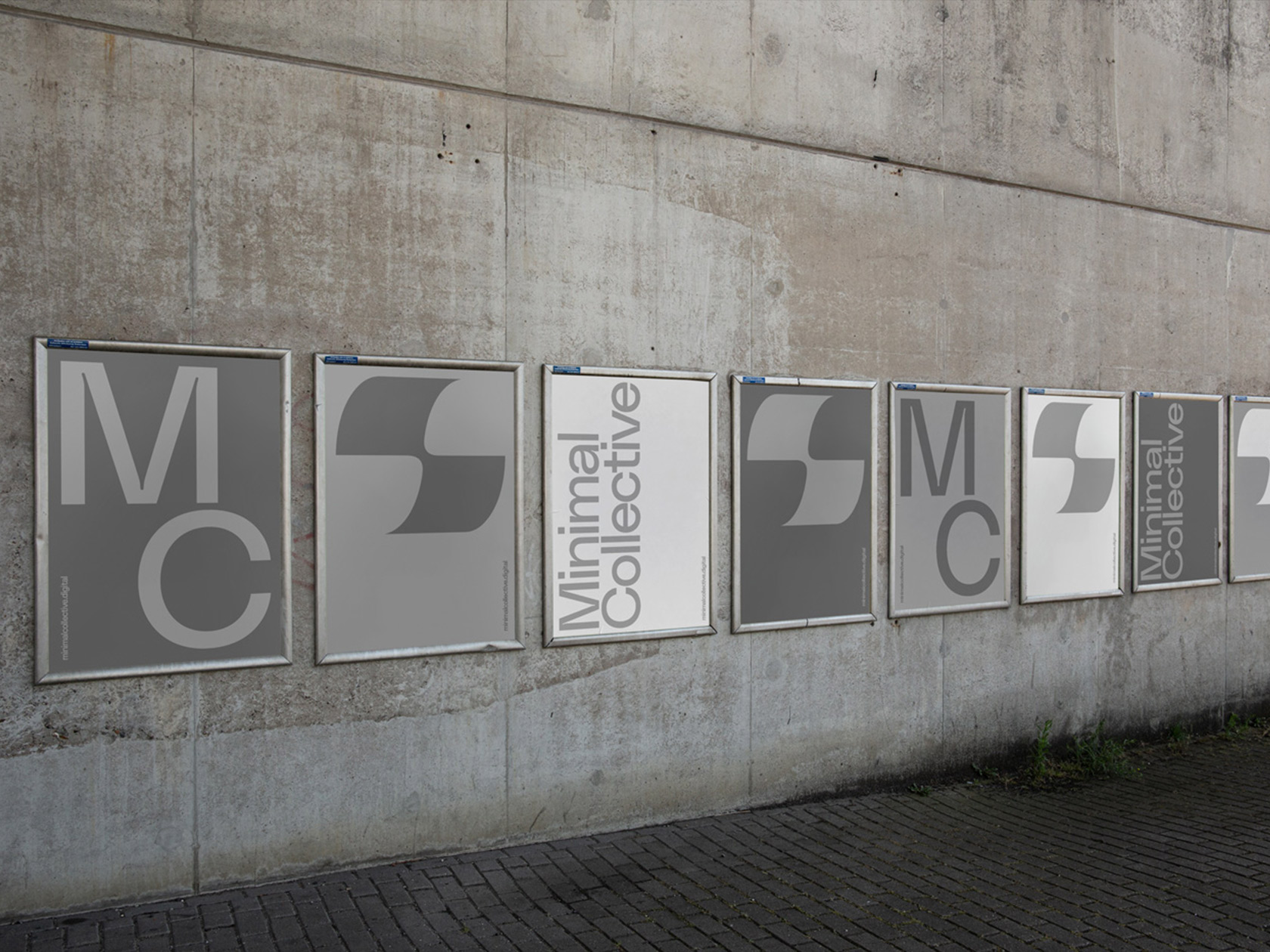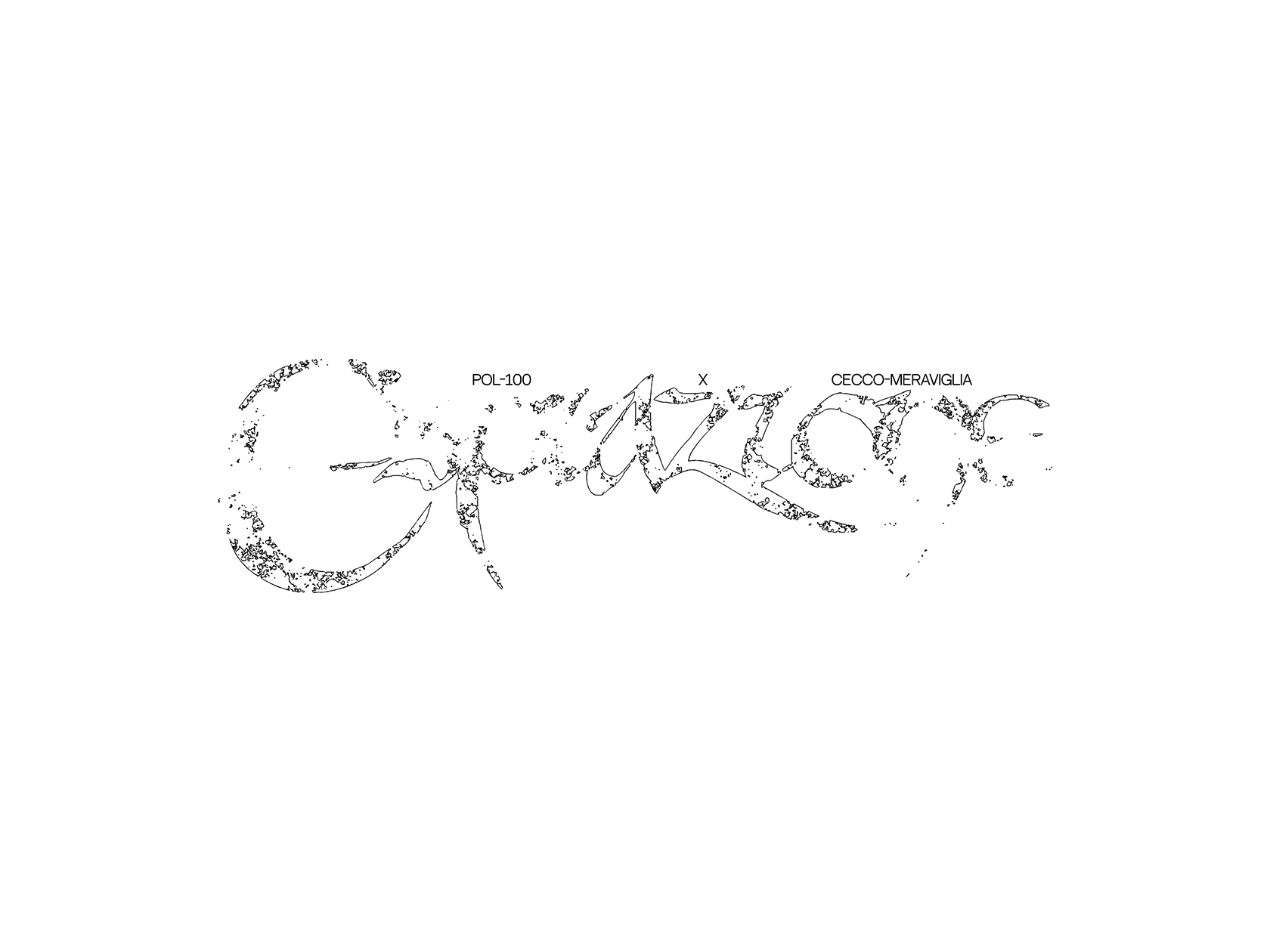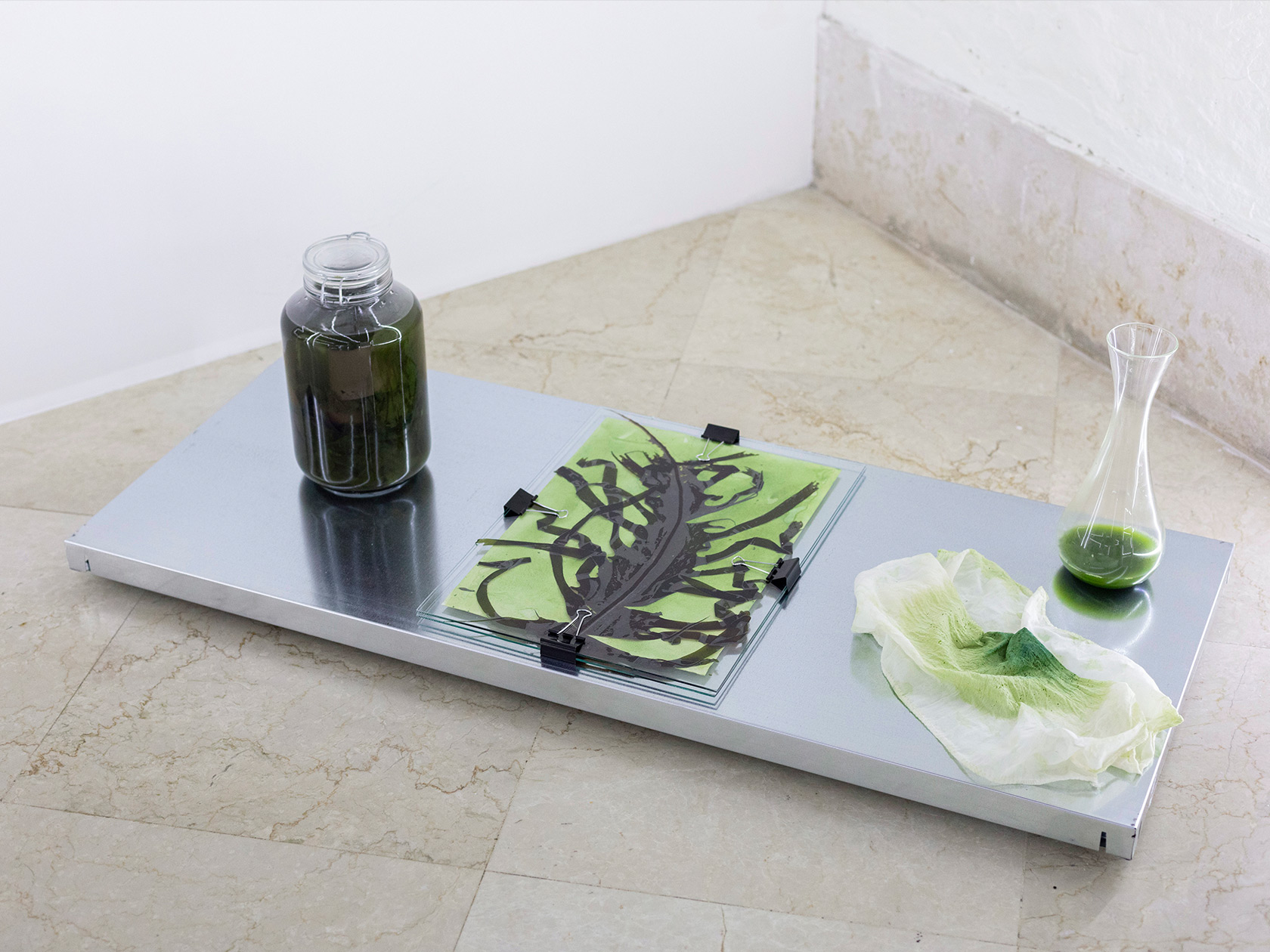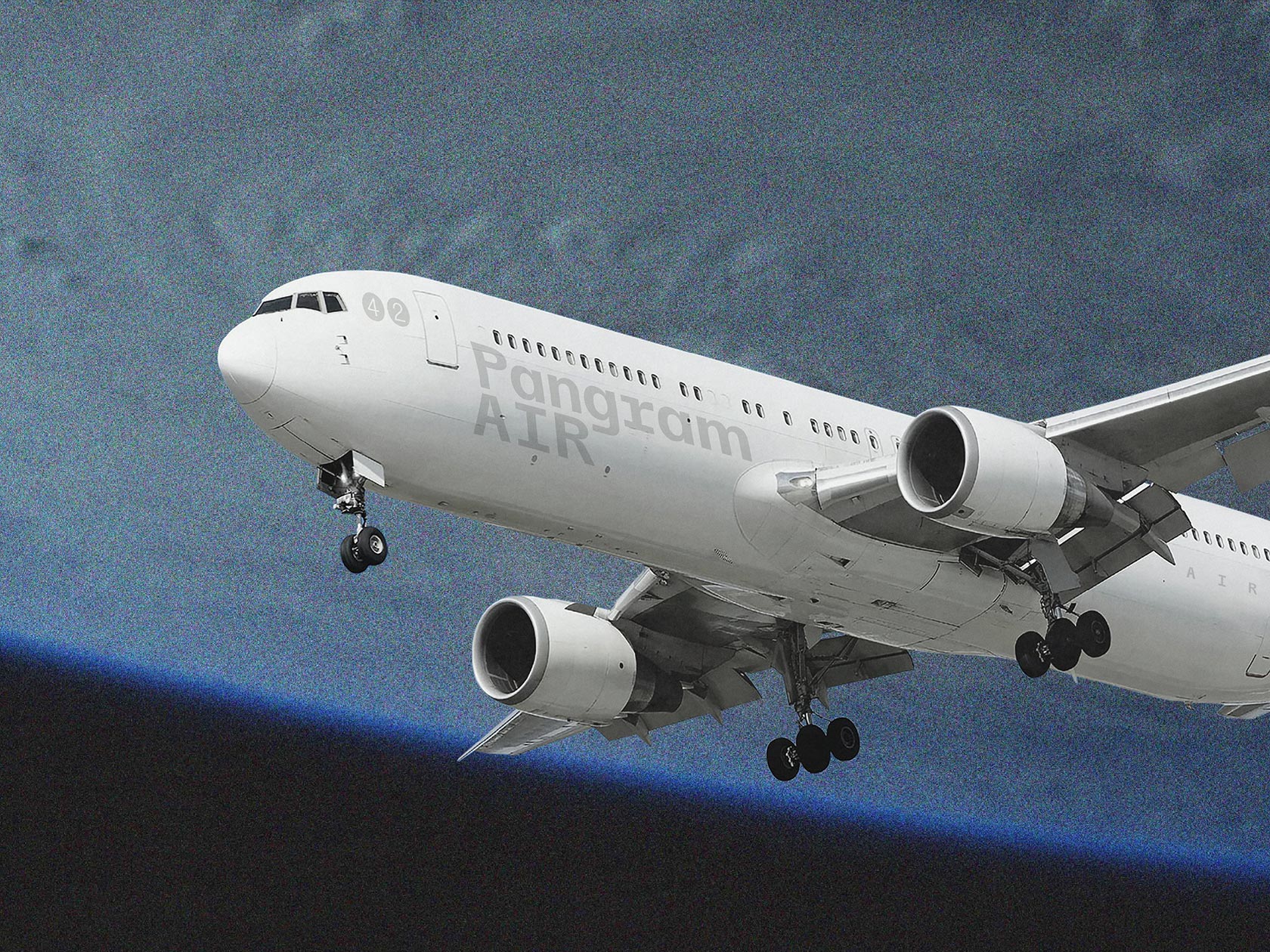In his essay “The Book as Object” from 1996, author Michel Butor writes that threads of thought and speech must be set into lines, lines divided into columns, and columns stacked along a third axis of depth to form a volume. Based on this notion of “volume” as a publication, as well as the space that something occupies and as the quality of something audible, the MA Graphic Media Design at the London College of Communication started the research driven narrative, A Line Which Forms a Volume. Each year, the critical reader and symposium is edited, written, designed and published by participants of the MAGDM and aims to thread the research of the participants into the wider contexts of design criticism and publishing. This year around, the third volume of ALWFAV focuses on collaboration and interdependence by framing the act of publishing research through the metaphor of the roundabout, once a landmark of Elephant and Castle where London College of Communication is situated. “The metaphor of the roundabout was developed not only with the intention of translating layers of research and its methodologies, this volume embodies the framework of collaboration through parallel lanes of information as in a roundabout.”, Francisca Roseiro, the production manager of ALWAFV 3 tells Collide 24, “Since we were deepening our research on our final major project at this stage, interdependence among us and external advisors proved to be an advantage.” Next to Francisca, six other fellow students were involved in this project, including Ricardo Gonçalves and Margarida Morais as editors, and Jaime del Corro, Paloma Moniz and Roxy Zeiher as designers.
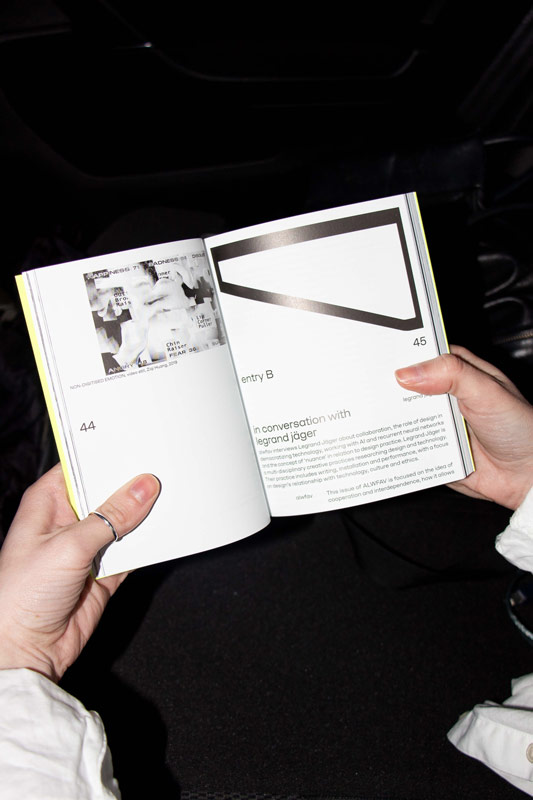
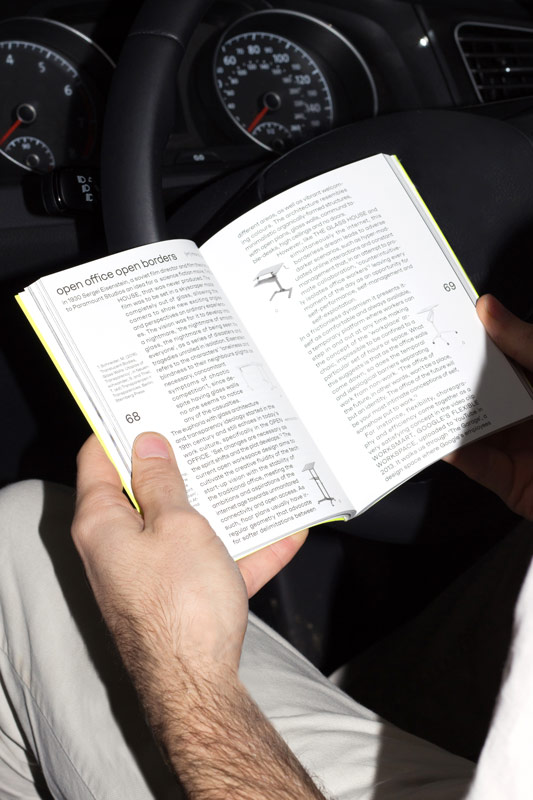
Starting with a collection of references from music, literature and films involving the idea of constant motion and clashes, the team collected 32 contributions which “can be somewhat overwhelming in such a small publication, both to the editors and the readers”, Paloma explains. In order to find a common ground to draw from, they focused on the metaphor of the roundabout and incorporated this principle into their visual concept. “We tried to create a dialogue between captions, images and text, where they activated each other by changing positions, creating spaces and rules for each other to appear, as it often happens on the road. The elements end up coexisting on the page in a kind of organized chaos.” Separately throughout the book, several roundabout intersections appear “which are these odd one sentence thought from a workshop we conducted”, Paloma adds on that matter. Those intersections aim at interrupting the texts without a warning or context, building ip their meaning both through their format and repetition.
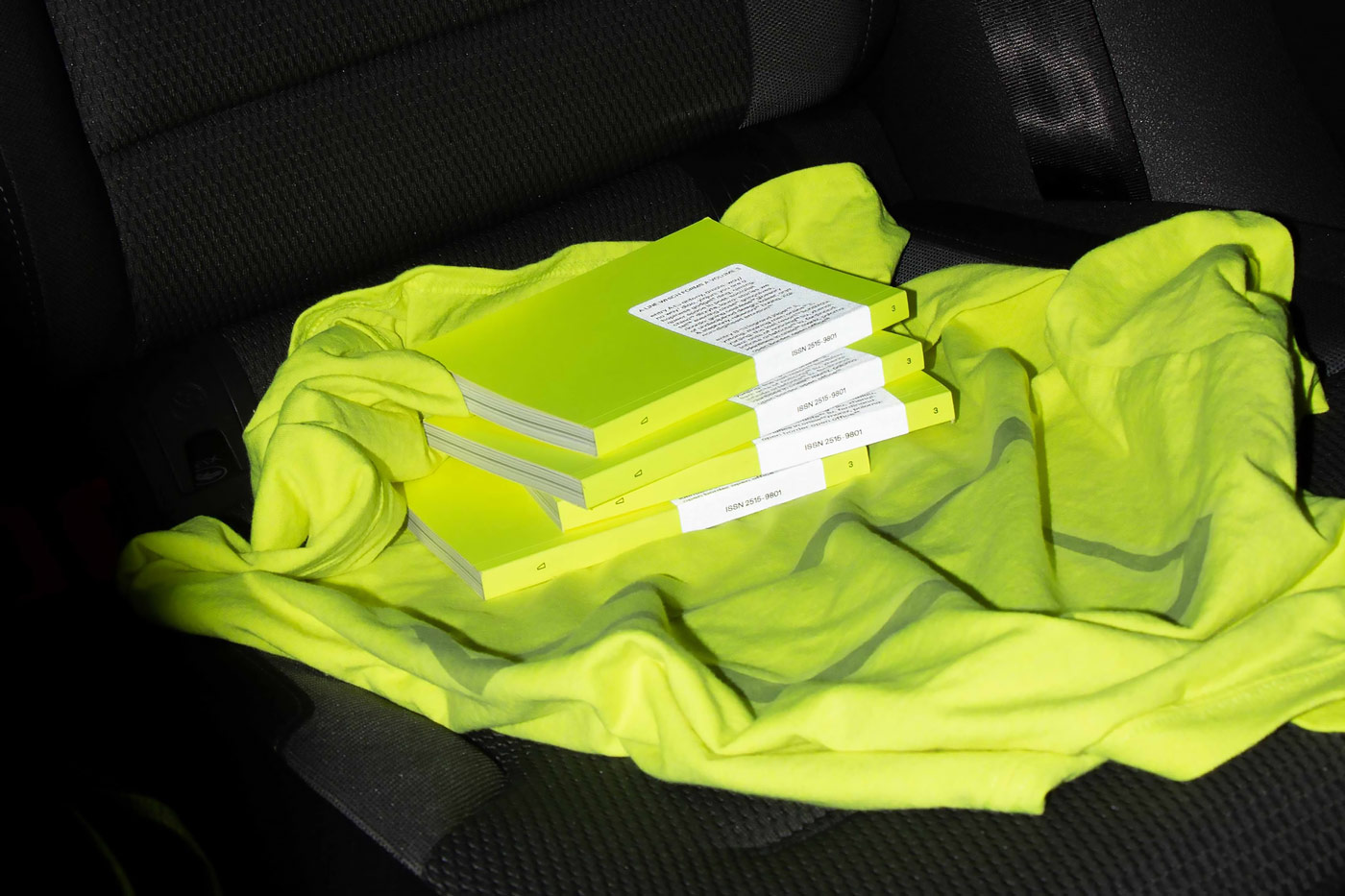
As fellow students at the London College of Communication, collaboration also became a subject that matters to all of them personally. Despite their contrasting backgrounds and prior education, all members of the ALWFAV3 team share a deep interest in critical design research and editorial design. Their different nationalities, professional backgrounds and variety of previous education brought various perspectives, skills and interests into the project.“This publication is the culmination of our several interests, where our final MA projects will live on, hopefully inspiring other designers to embark on their own critical design practice”, Jaime concludes. During the project, the team has been pressed on time, so the only way this endeavor could work out in the end was to build upon the “commitment, trust and the strong identity we tried to explore from the beginning”, Francisca says.
“Collaboration in the sense of sharing knowledge is how I believe I have learned the most. Collaborating with people from different work fields and with different experience, exchanging ideas and projects, gathering various points of view can help a lot in the practice of design”, Margarida tells us, “Through collaboration we can build networks or communities, like the one we have with A Line Which Forms a Volume. Not only the six of us that keep gathering once in a while, but also our editorial and design advisors, Billie Muraben and Carlos Romo Melgar that have helped us a lot throughout the process and that we are still in contact with.” The diversity in within their group fostered a fruitful basis for critical discourse and complementation of each other – creatively, as well as personally. “Throughout the process, we learnt a lot from each other and the safety net of the group gave us confidence to experiment and openly discover new methodologies, formats and styles”, Roxy concludes, “In general, pursuing an ambitious long-time goal has definitely brought us closer together as a team and furthered bonding. I think it is very valuable to have such well-proofed collaborators for future projects to come!”
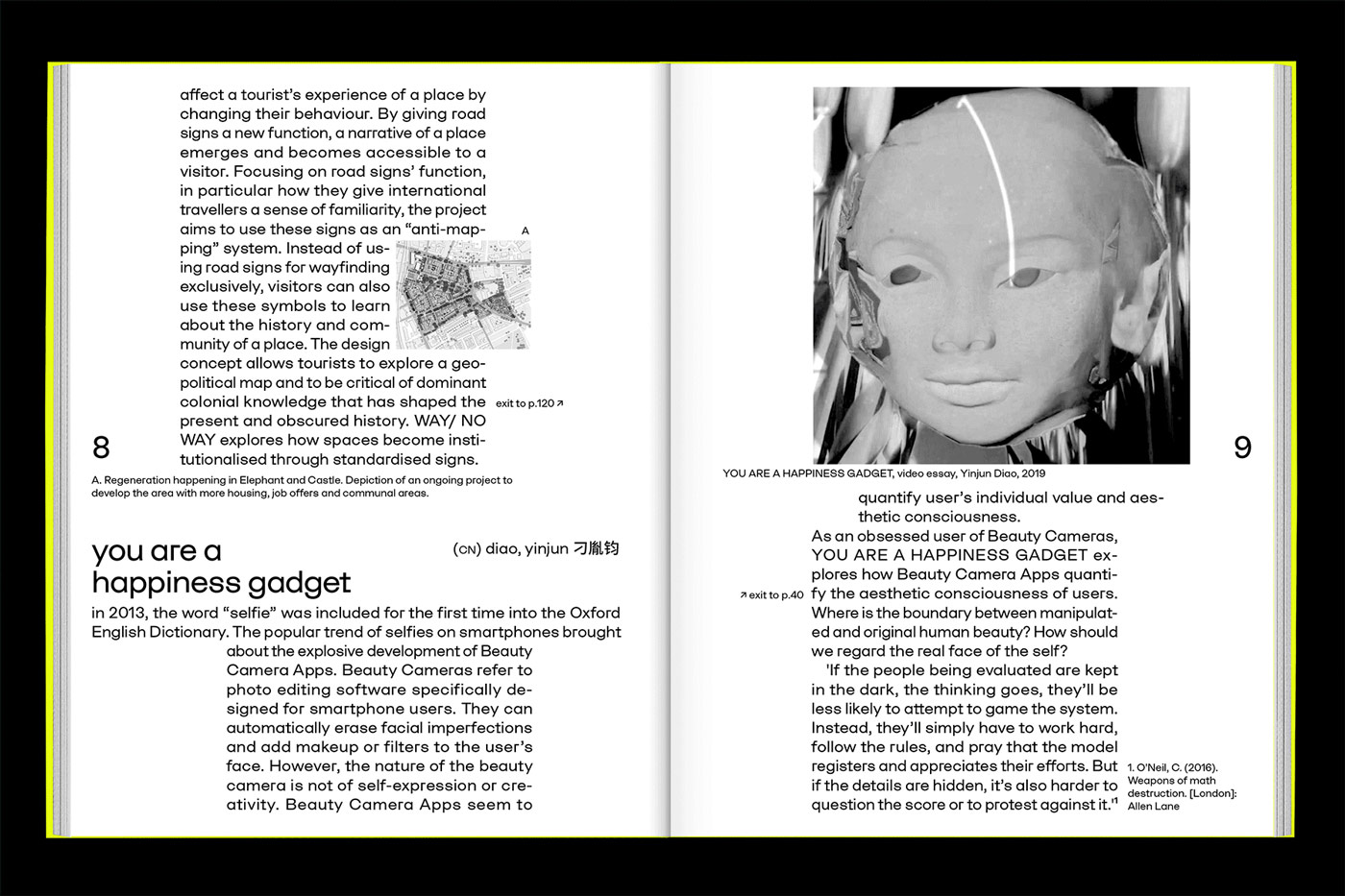
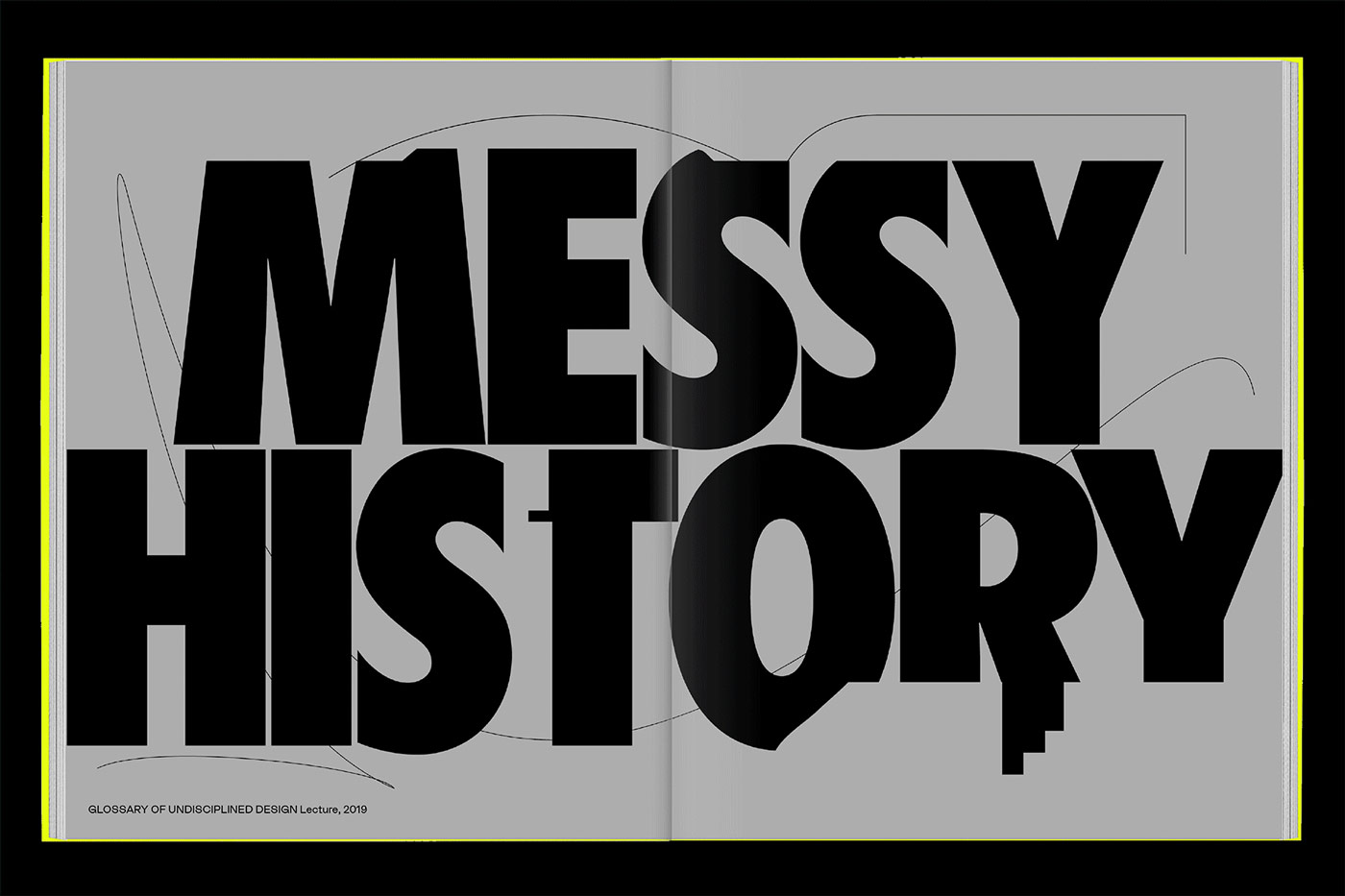
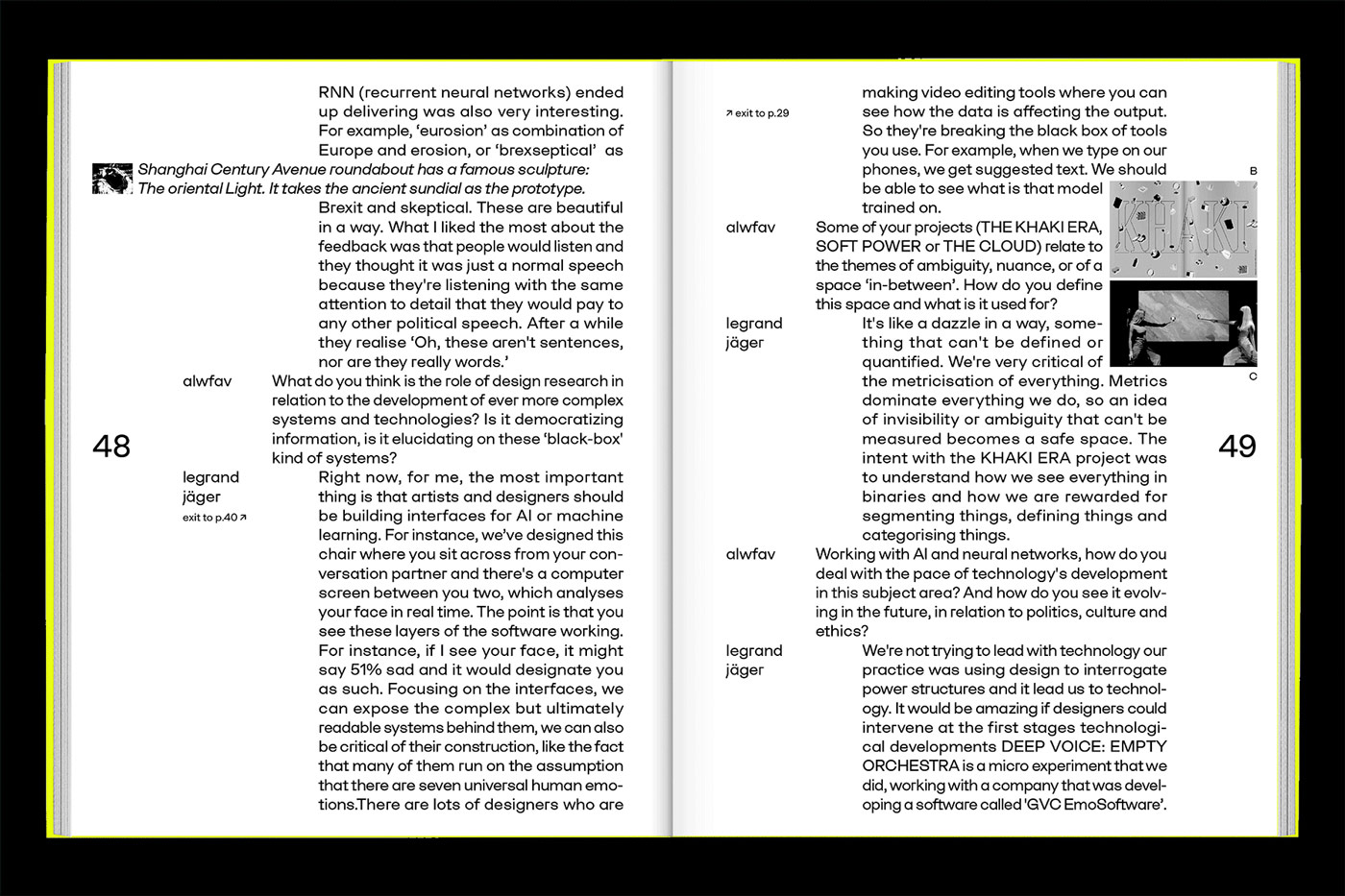
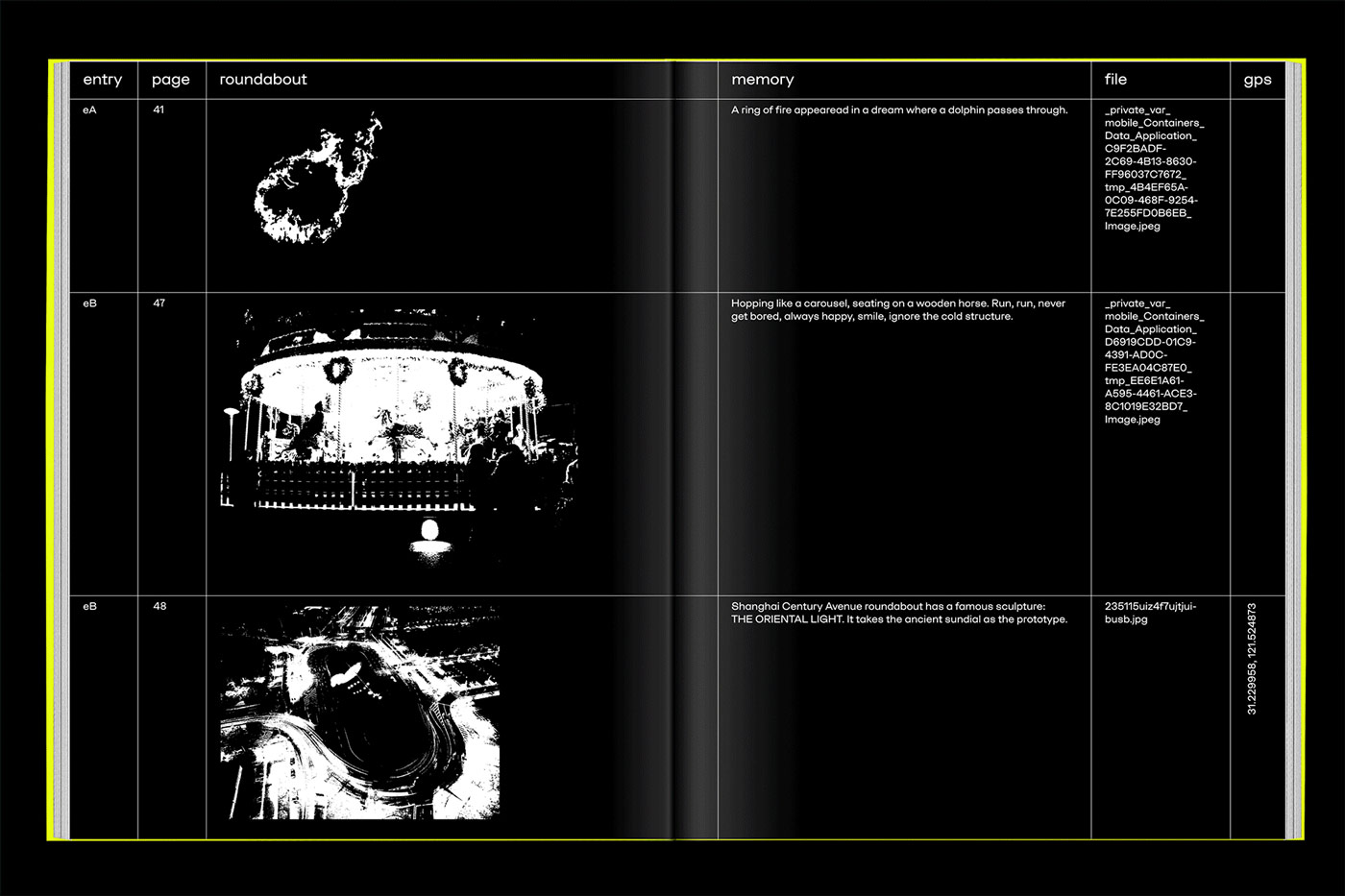
To hit the ground running, the group scheduled weekly deadlines, meetings and small presentations to overview the process from the start, while using open source platforms to share and edit their content. Apart from that, there was not really a need for defined rules “as the six of us are close friends, know each other for the good and bad and enjoyed working together before”, Roxy explains, “In the beginning, we (democratically) agreed on democratic decision making and trusted in an organic collaboration flow. In the end, fruitful collaboration always comes with commitment and open communication. Mutual reliability is key for a felicitous team play. In our case, it naturally worked very well without outspoken rules.” As soon as they established the backbone ideas for the project, the team decided to split up in order to be more productive, with each member focusing on their specific role. “Working in a group of 6 people, I believe we all had to learn to trust each other”, Ricardo concludes, “This trust allowed us to approach challenges in an open and receptive way, to learn with each other, and to give the project a larger scope. This extends to the relationships with the collaborators, both course participants and external.”
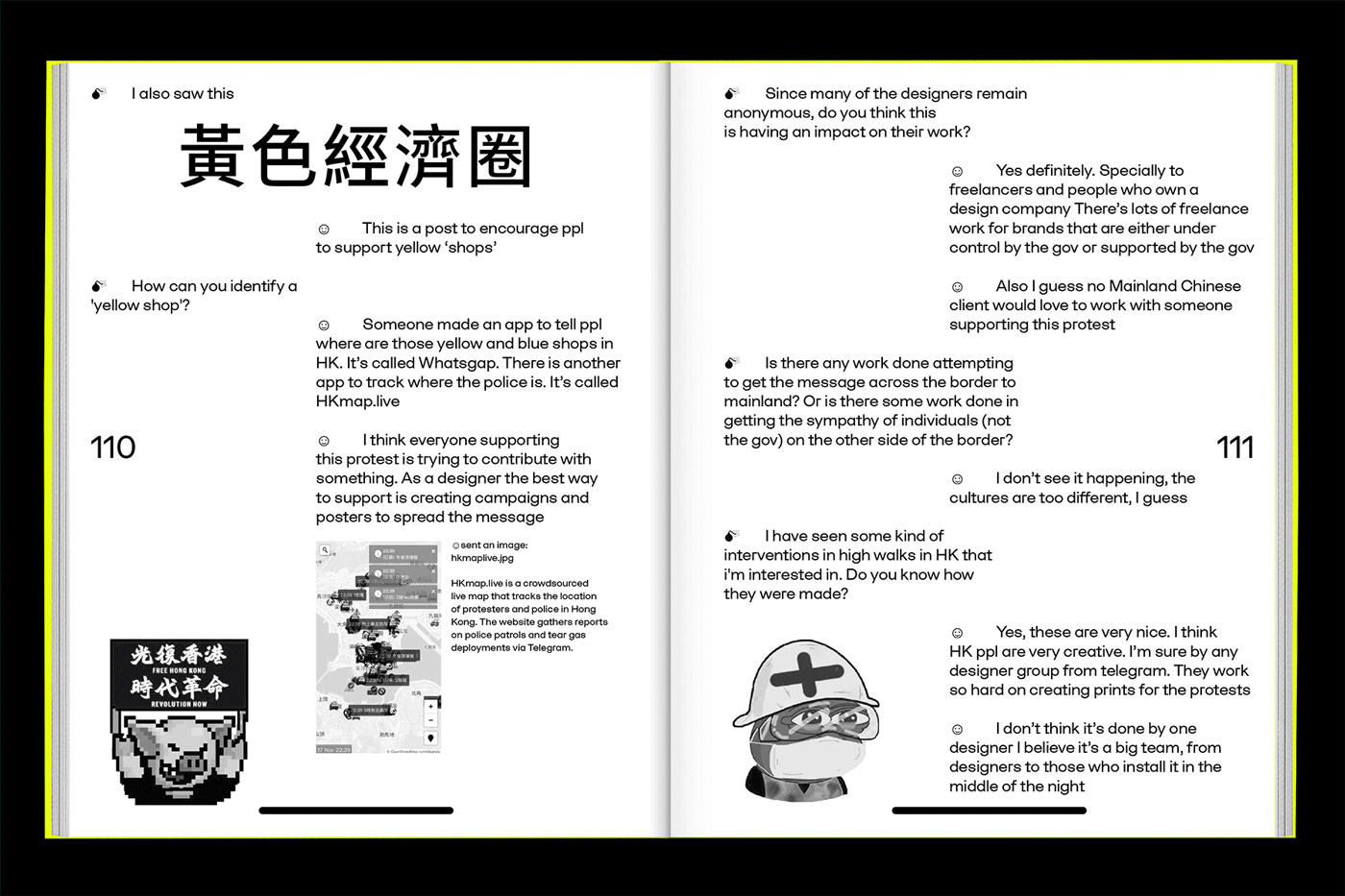
The design of the reader is very much inspired by the overall concept of the roundabout, guided by notions such as order and chaos, crash, intersection, interrupted continuity, temporary occupation and the idea of stepping in and stepping out. “Derived by these principles, we intended to create a continuous reading flow with no visual hierarchy, but a distinct dialogue between the contributions. The flow of text is therefore only interrupted by images ‘crashing’ into the text lanes or surprisingly interrupted by odd memories and thoughts on roundabouts we collected within a collective workshop”, Roxy explains. Another nod to the roundabout theme is the table of contents on the cover of the publication, accompanied by a small screen print of the glyph. The index is printed on a reflective sticker which they have produced with a Chinese road sign manufacturer and is bent around the publication’s spine. “The combination of the reflective sticker and the vibrant yellow of the Gmund Action Vibrant Arsenic paper we used on the cover emulates that of a road cone or traffic warden jacket. A characteristic element of each roundabout is its centre – the publication centers on a collection of all course participants’ associations with roundabouts”, she adds.
In order to create a visual connection to the two previous issues, they decided to continue working with selected design components. “The use of a glyph was something we experienced as particular character-shaping in ALWFAV 1+2. By reinterpreting the function of the glyph as a sign that introduces a new entry or a new place where the book can be begun, we transposed the element into our editorial approach”, Roxy tells us, “We also kept the typeface ‘Tactic’ by Antoine Eisensohn as it seemed to have become a part of the A Line Which Forms A Volume family.”
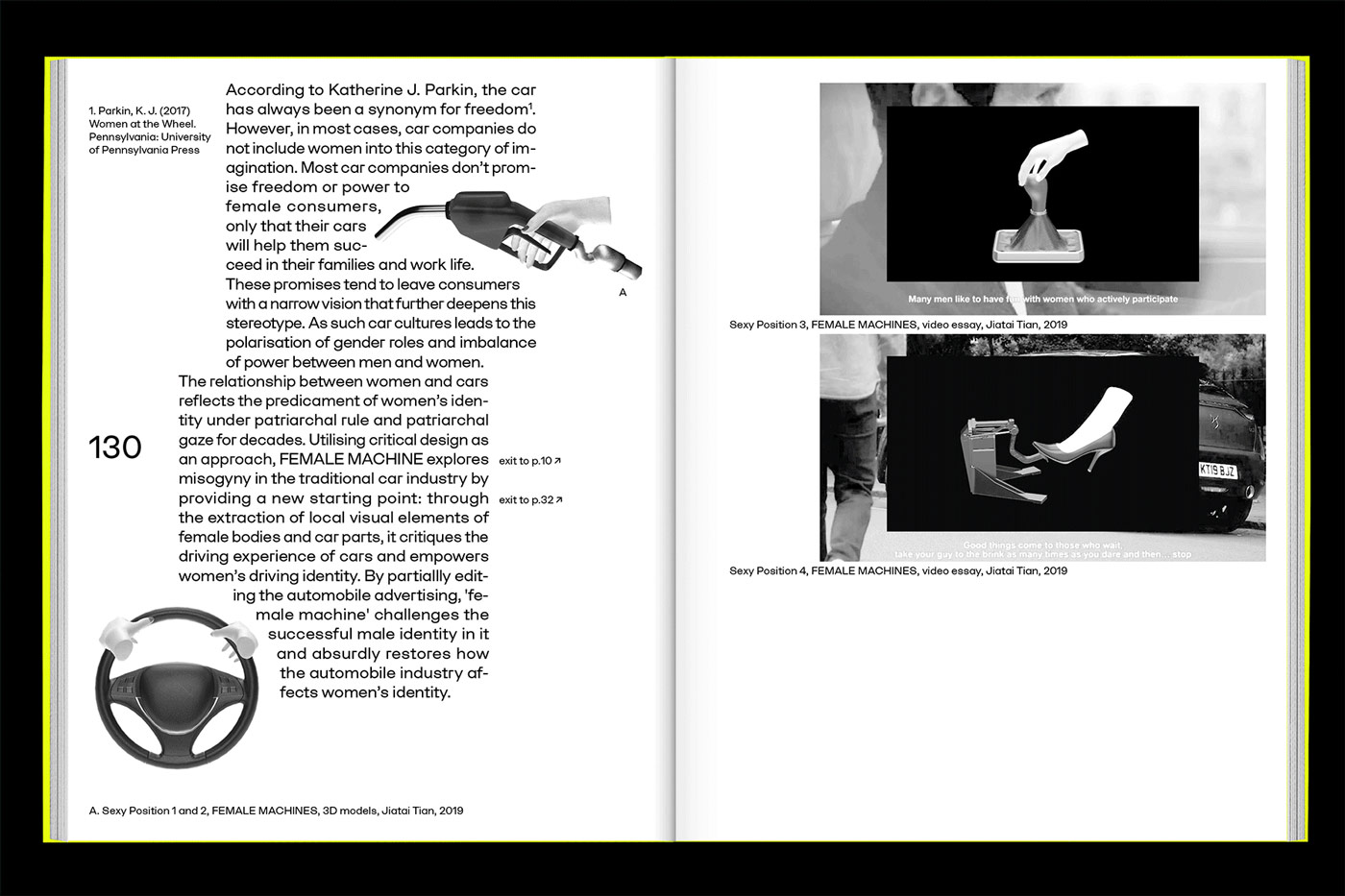
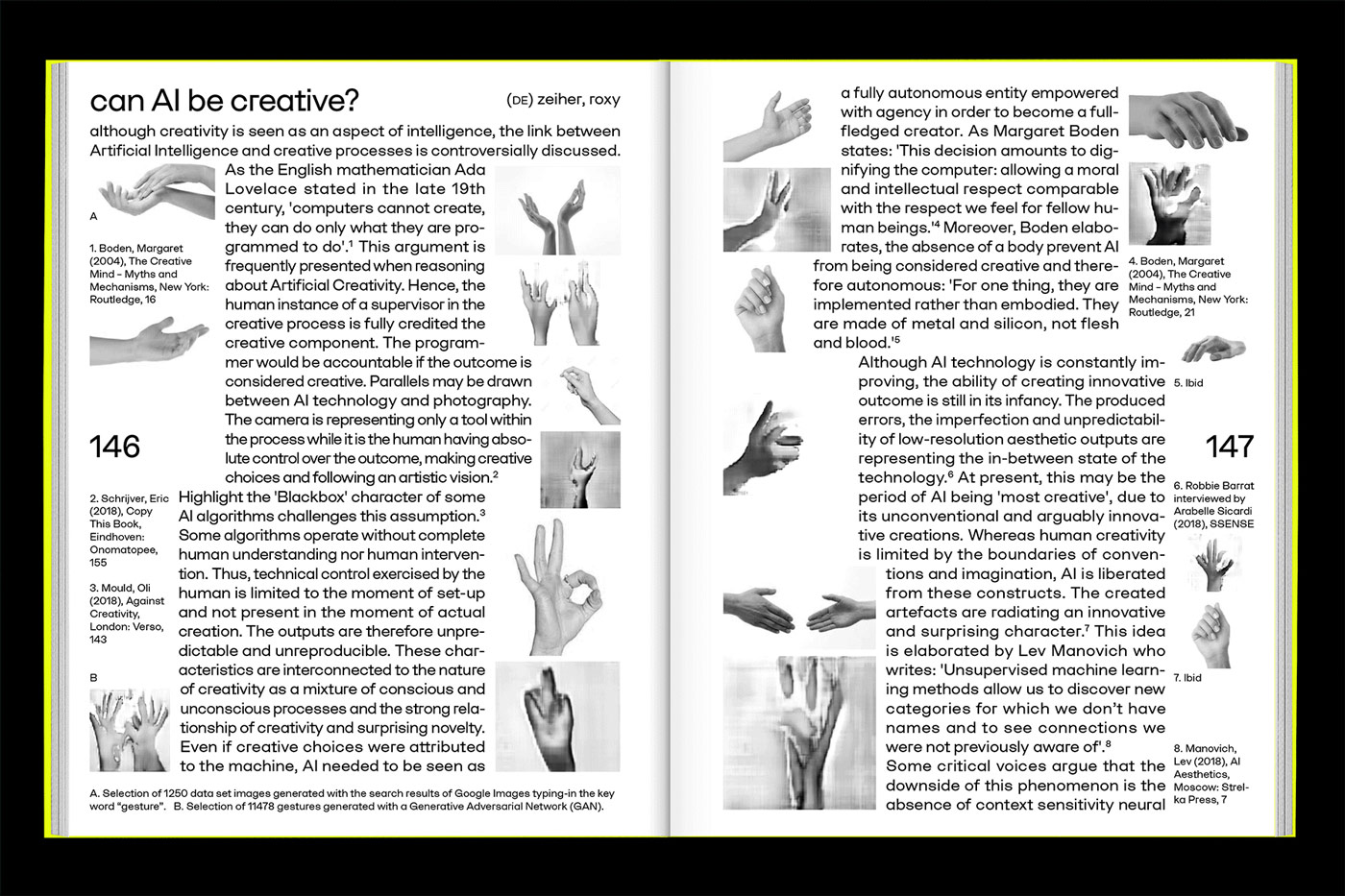
Stating that “there are several reasons why traditional media such as print still prove useful and worthy to many people today”, Jaime explains that deciding on publishing a physical publication instead of just a digital one has been conscious decision. “I think print carries a certain authority as a medium that requires risk and cost to be executed. People still pay for books and magazines because they see that, by being costly, an effort has been made by the editors to orchestrate budgets, publishers and printers to create a certain object. Print carries a legacy and authority that can often bring more confidence to the reader than digital media”, Jaime adds, “This brings me to the second reason. Even though we might be more skeptical towards the authority of a lot of digital content, we tend to value very much that it is mostly free. While this is one of the best things digital content has today, it often means that either the publisher is being unpaid, or that we ourselves are the price. I think print has a tremendous quality in that you are directly paying the effort of publishers, editors and distributors, and that its content has not necessarily been algorithmically tailored to you. Buying a book will probably mean that you even have to pay for content that won’t interest or matter to you, but solely by choosing that book, you still get the chance to choose who to have contact with, possibly accessing different topics and views.”
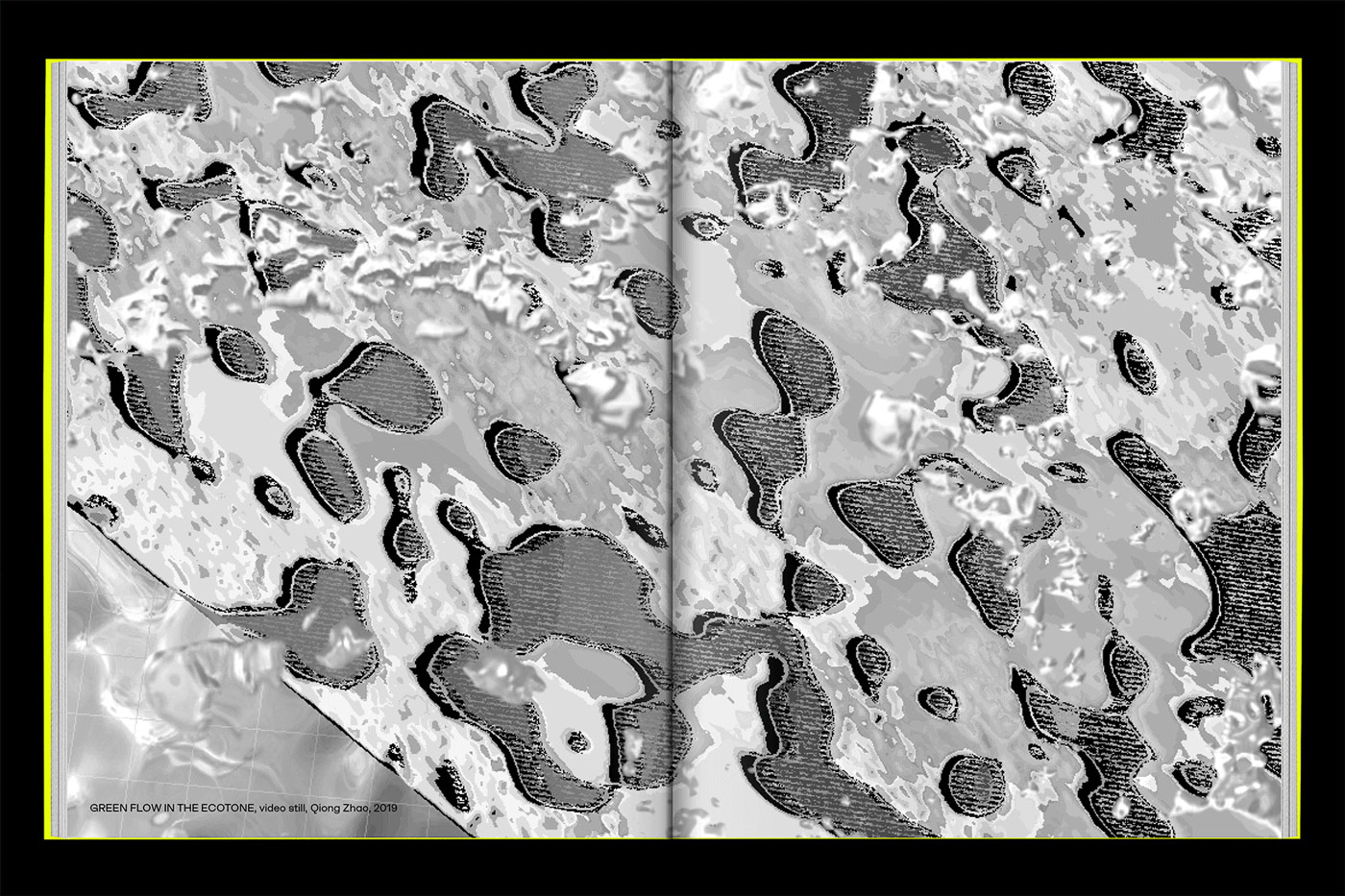
As digital media prompts a quicker, less focused reading experience than print, a lot of academic content is still bought and consumed in book format today. “ALWFAV, partly falling into this category, seeks this experience for its audience: to focus, learn, reflect and hopefully generate discussion.” Nevertheless, all three issues of ALWFAV are published online as well, to make it available to a larger public. Aiming to bring the academic work and ideas out of the academic space, the group constantly tried to push and overcome existing boundaries and to share as much insights and knowledge that they ended up accumulating during the course as possible. “We are aware that this is only possible to an extent, and that this concept of a roundabout where collaboration happens freely has a lot of restrictions, gatekeepers and privilege attached to it”, Paloma states.
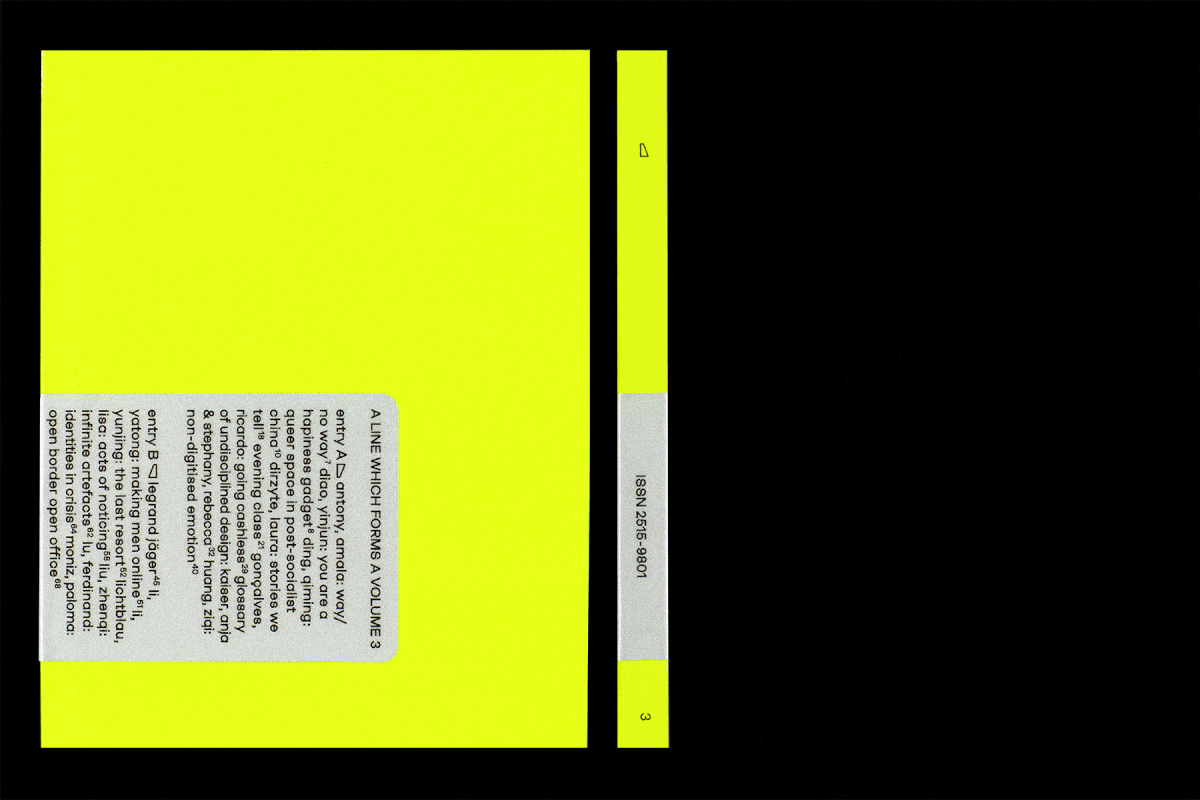
With the fourth volume already in the making, Margarida gave us some hints about the next theme. “A very exciting asset to ALWFAV4 team will be Common-interest, a design research practice established by Corinne Gisel and Nina Paim, who will be joining as advisors”, she says, “Common-interest operates at the intersection of knowledge production, exchange, and mediation. They use design as both a lens to critically look at the world, a tool to bring people together, and as a means to make socially relevant insights public. For them, design research is an activist tool for issue advocacy, collectivity building, and communing knowledge.”
If you are as excited as us to know more about this next volume, bridge the time by delving into the pages of the recent publication and continue with the line.

